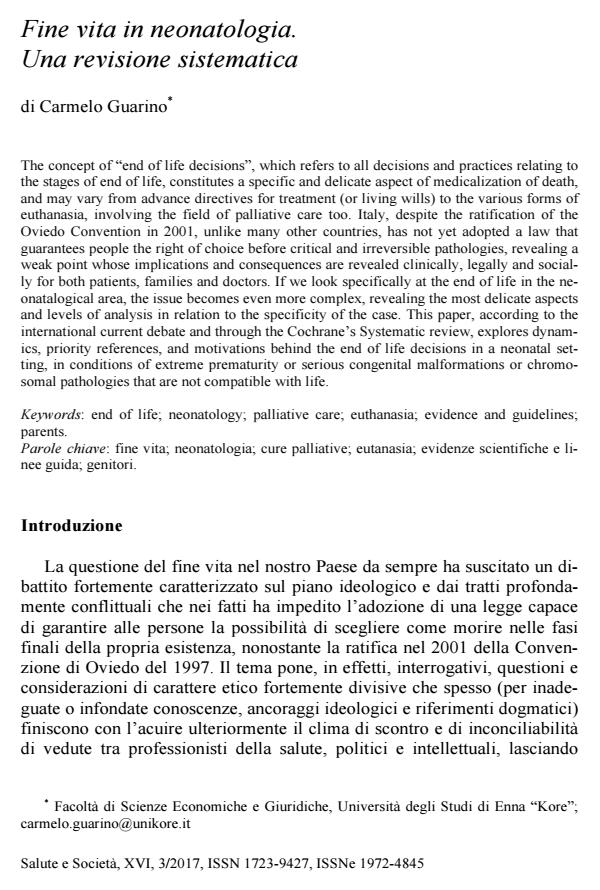Fine vita in neonatologia. Una revisione sistematica
Journal title SALUTE E SOCIETÀ
Author/s Carmelo Guarino
Publishing Year 2017 Issue 2017/3
Language Italian Pages 14 P. 31-44 File size 83 KB
DOI 10.3280/SES2017-003004
DOI is like a bar code for intellectual property: to have more infomation
click here
Below, you can see the article first page
If you want to buy this article in PDF format, you can do it, following the instructions to buy download credits

FrancoAngeli is member of Publishers International Linking Association, Inc (PILA), a not-for-profit association which run the CrossRef service enabling links to and from online scholarly content.
The concept of "end of life decisions", which refers to all decisions and practices relating to the stages of end of life, constitutes a specific and delicate aspect of medicalization of death, and may vary from advance directives for treatment (or living wills) to the various forms of euthanasia, involving the field of palliative care too. Italy, despite the ratification of the Oviedo Convention in 2001, unlike many other countries, has not yet adopted a law that guarantees people the right of choice before critical and irreversible pathologies, revealing a weak point whose implications and consequences are revealed clinically, legally and socially for both patients, families and doctors. If we look specifically at the end of life in the neonatalogical area, the issue becomes even more complex, revealing the most delicate aspects and levels of analysis in relation to the specificity of the case. This paper, according to the international current debate and through the Cochrane’s Systematic review, explores dynamics, priority references, and motivations behind the end of life decisions in a neonatal setting, in conditions of extreme prematurity or serious congenital malformations or chromosomal pathologies that are not compatible with life.
Keywords: End of life; neonatology; palliative care; euthanasia; evidence and guidelines; parents.
Carmelo Guarino, Fine vita in neonatologia. Una revisione sistematica in "SALUTE E SOCIETÀ" 3/2017, pp 31-44, DOI: 10.3280/SES2017-003004